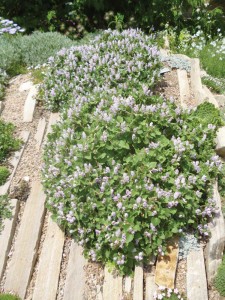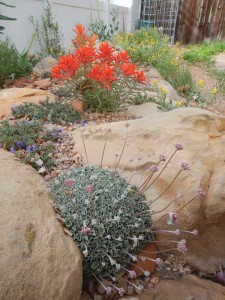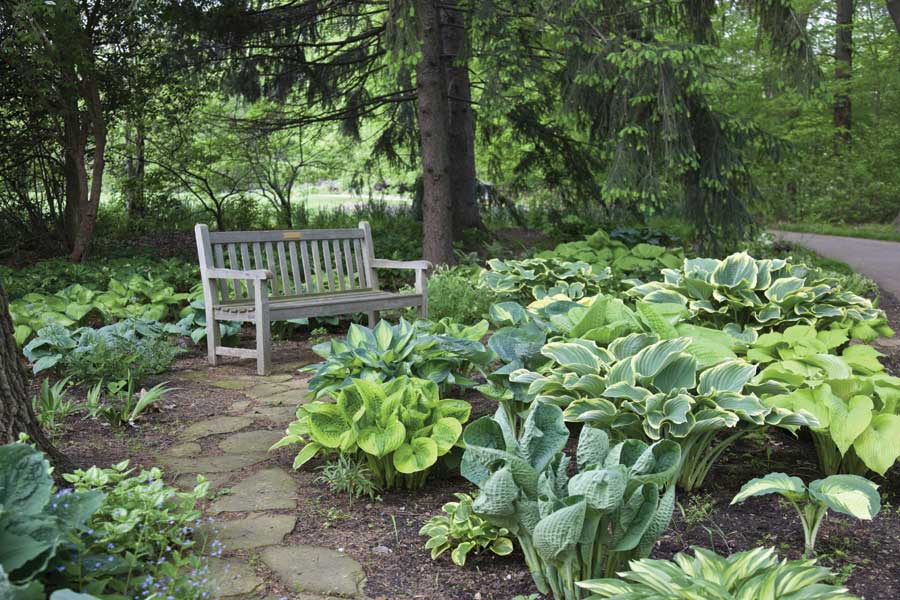Crevice gardens allow gardeners to grow xeric plants in unique setting
01 Apr 2016
Garden on the Rocks, Please!
By Eli Wallace When it comes to flashy garden features like ponds, gazebos and waterfalls, “low maintenance” isn’t the term that springs to mind. So some local gardeners are starting to experiment with crevice gardens—a new type of easy-to-maintain garden centerpiece.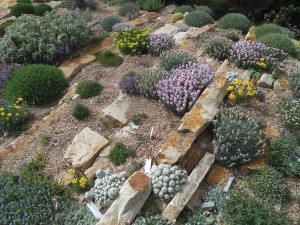
Perky Sue daisies, chartreuse-yellow alpine buckwheat, silvery budded spikethrifts and small white clumps of Escobaria sneedii cactus. Photo by Panayoti Kelaidis
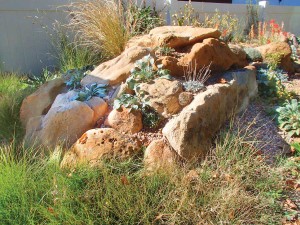
Longmont Jewel Box
“I took my inspiration from examples at the Denver Botanic Gardens and the incredible rock garden at the Apex Park pickleball facility in Arvada,” Brawner says of her newly created crevice garden. “I’ve also always enjoyed seeing natural crevice gardens in the mountains.” Brawner built her crevice garden on a sloping edge of her Longmont property, carefully placing both stones and plants. She hired a garden helper to move the rocks while she directed and chose different types of sandstone to add a range of color in the rocks. She recommends varying the proximity of the stones to create more planting flexibility. Also, plan carefully. Once you move a heavy rock into place, you won’t want to move it again.
Take a Test Drive
To implement a large-scale crevice garden, you’ll likely want to work with a landscaper who can design a unique garden that fits your space. Yes, crevice gardens are low-maintenance, but that doesn’t mean they’re easy to design or build. When planning your garden, avoid putting rocks over utility lines or under trees. “The tree’s roots steal water from the crevice garden and smother the crevice plants with leaves,” Seth says. Avoid proximity to aggressive rhizomatous plants like smooth brome, bindweed, Bermuda grass and western wheatgrass, “which will have a field day ruthlessly overtaking the whole garden and hiding all your expensive stone,” Seth says. Otherwise, you can expect to use “tons of nasty, poisonous herbicides.” Crevice gardens are also expensive to install. “They’re stone-heavy and labor-intensive, so they’re for people who are serious about it,” Seth says. However, he believes a modest miniature version “as small as two stones close to one another” can work as an experimental crevice garden, or in a transitional area of an established garden. He suggests gardeners take a “test drive” by using a trough or similar container to form a mini crevice garden. Start by arranging rocks into lines inside the container (longer rocks make easy-to-work-with crevices) and line the container with a sand-gravel mix. Then arrange plants according to sun exposure (bare-root planting is recommended) and water sparingly. The fun of a crevice garden is growing more unusual plants and enjoying the sculptural quality of the rocks. The showy gems that take root in your garden are sure to delight and amaze you!Plant Selection
When placing plants, keep in mind the direction your garden faces. Because Eve Reshetnik Brawner’s garden faces south--southwest, she planted mostly cacti, some fall-blooming autumn crocus, Lebanon stone cress, and a few odd Chilean and Central Asian plants. Native plants of steppe regions like Patagonia, Central Asia, highland South Africa and the American Southwest generally thrive in crevice gardens.